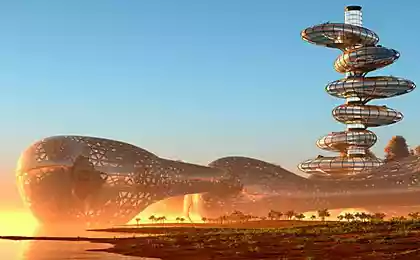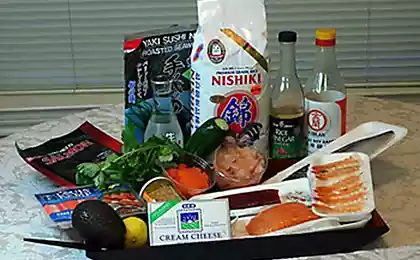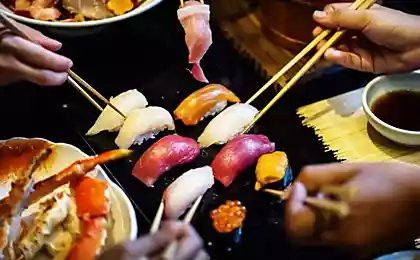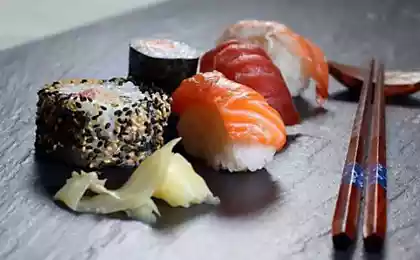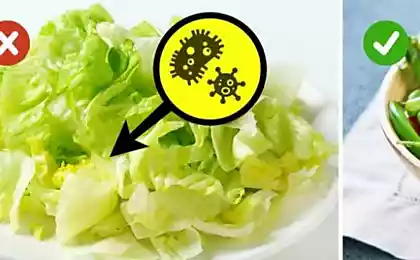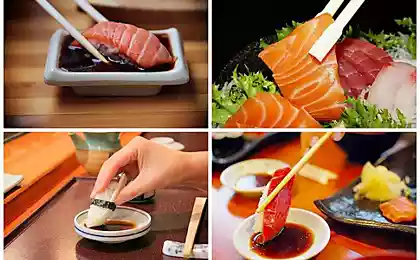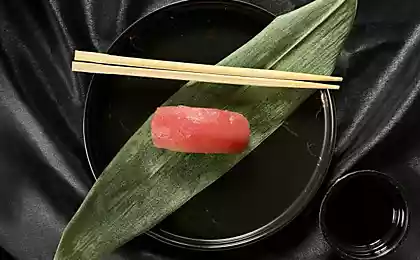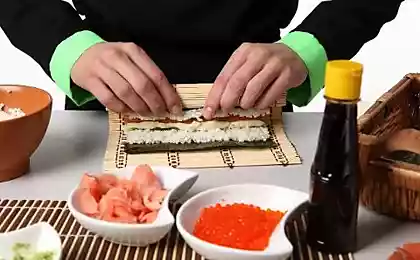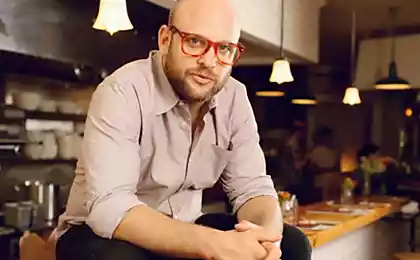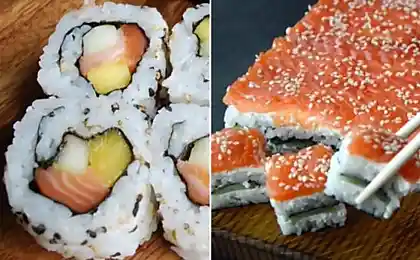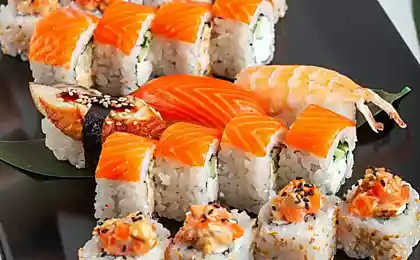2970
What qualities and skills should have a sushi chef
To see with their own eyes the breadth of responsibilities, at the invitation of the administration, we visited the kitchen quite popular restaurants where honor native Japanese technique sushi and appreciate the perfection of taste, but reject all instructions and directions of the way when it comes to the rigor with which usually served traditional Japanese sushi.
Read on and you will learn what qualities and skills should have a sushi chef to be head and shoulders above the rest.
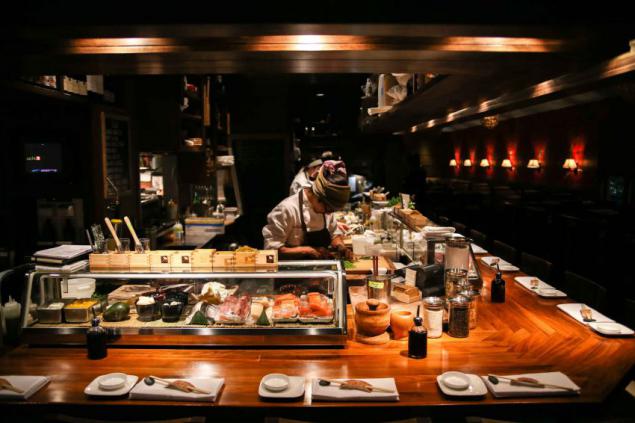
Meet this Masa Sayo. He moved to Texas from Japan in 2003 to become part of a team newly restaurant «Uchi». This mackerel, which was taken today from Japan!
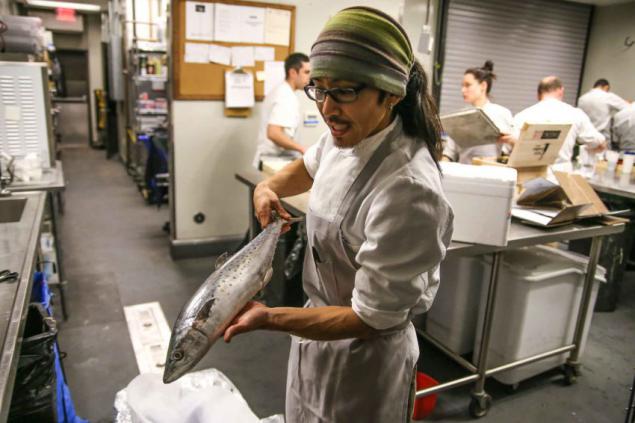
The main instruments sushi chef, but his hands, of course, are the knives. Masa carries a serious arsenal, however, generally uses only two or three blades per shift - it depends on the situation and his mood. On each blade are intricate Japanese characters denoting something like the acuteness sharpened knife.
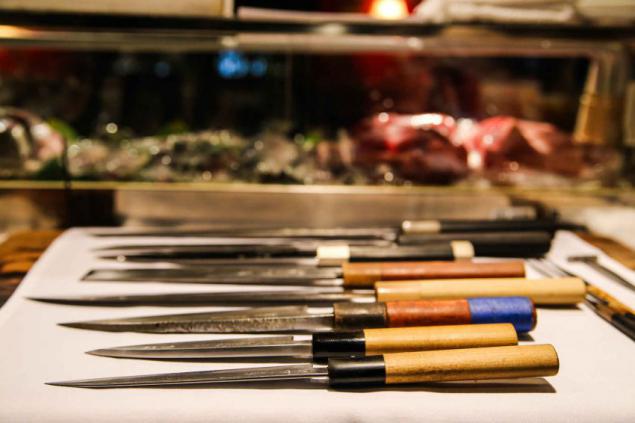
Today, Masa arrived at work at 11 o'clock in the morning in order to have time to do some preparation before the change - at 17.00. Tonight in the expected influx of visitors, so Masa chose an inexpensive lightweight knife that makes it easier to cut products. This small ceramic block is not used for sharpening knives, but rather in order to align the blade and smooth out any irregularities and surface roughness.

Fish in the restaurant brought a few times a week, but sometimes international suppliers and air transport can be unpredictable. Delivery of the goods are detained due to bad weather conditions, employees «Uchiko» had to take him by the airport.
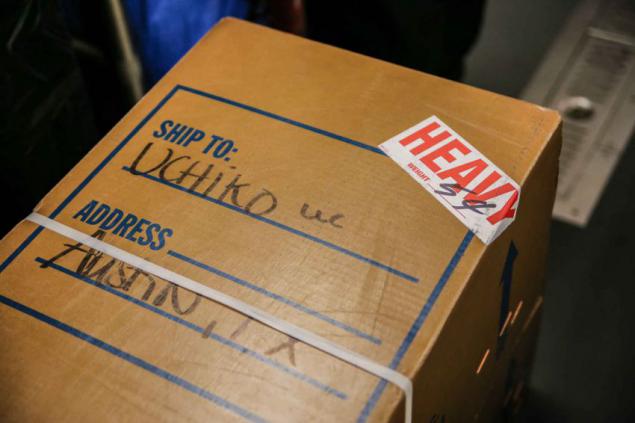
The restaurant has two main supplier of fish. Thanks to the efficiency of air transport, they deliver the freshest fish from all over the world, including a sushi center of the world - famous Tokyo Tsukiji Fish Market.
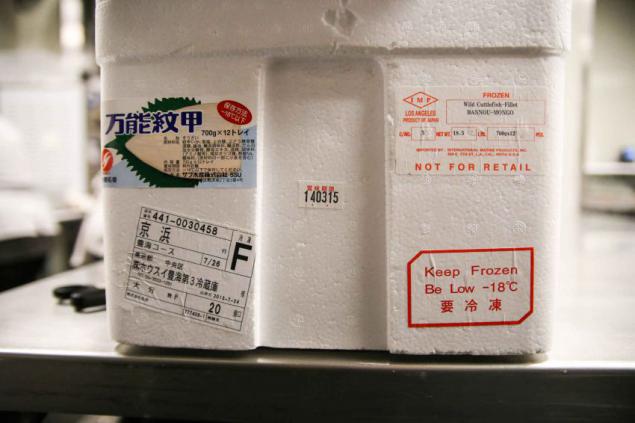
Butchering fish usually involved three people. The duties include Masa removal of scales. He holds the fish behind the head, because the fins are often very poisonous.
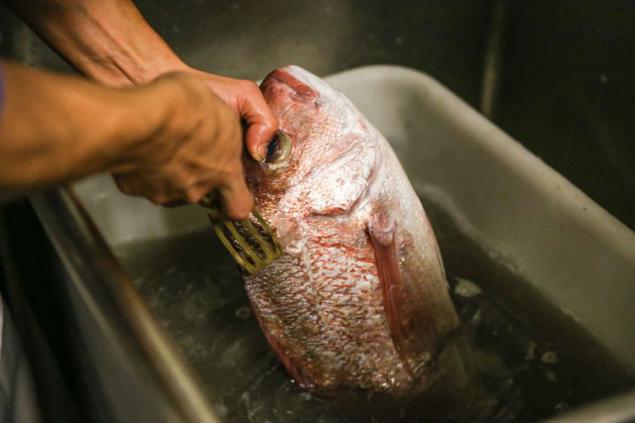
The second guy neatly on a cutting line cuts the fish head.
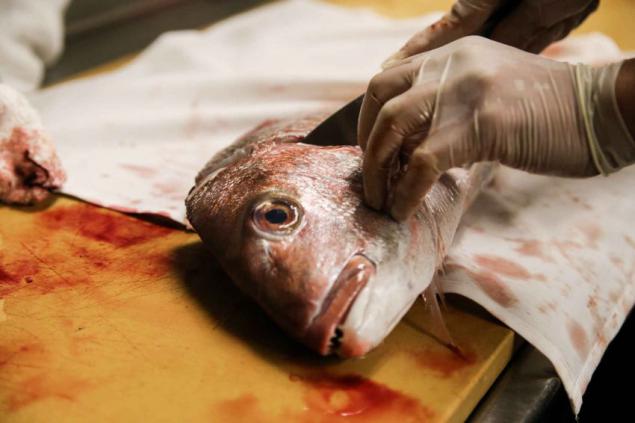
Gore under the spine is removed with a special tool made of several shpazhek. If blood is not removed, the fish meat spoil quickly.
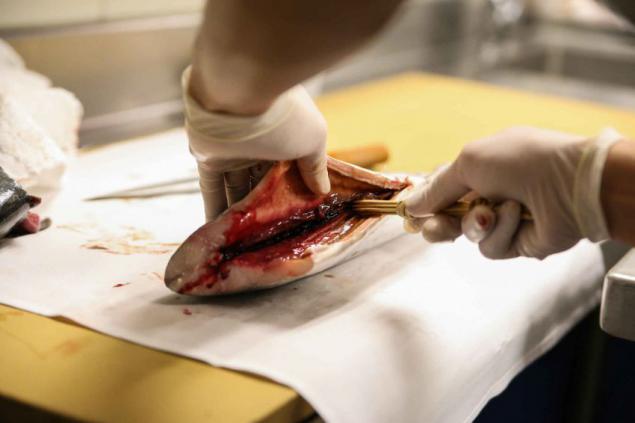
Removal of internal organs requires special care and accuracy, as accidentally hitting, for example, gallbladder, you run the risk of spoiling fish flesh and get a scolding from the chef. After carrying out a major operation three workers thoroughly wash and rinse water fish.
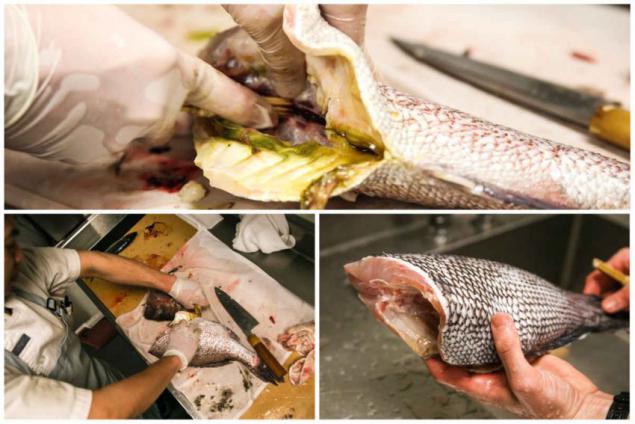
The whole process of butchering fish held in almost complete silence, workers retain their essential Zen calm and composure.
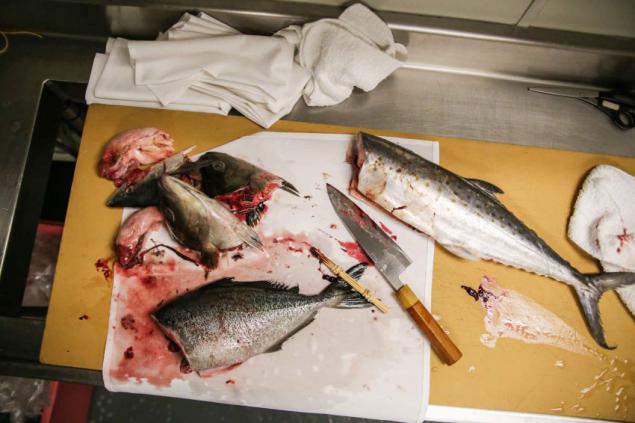
The team cut up about 13-18 pounds of fish for half an hour, after which it is sent to the sushi counter for profiling.
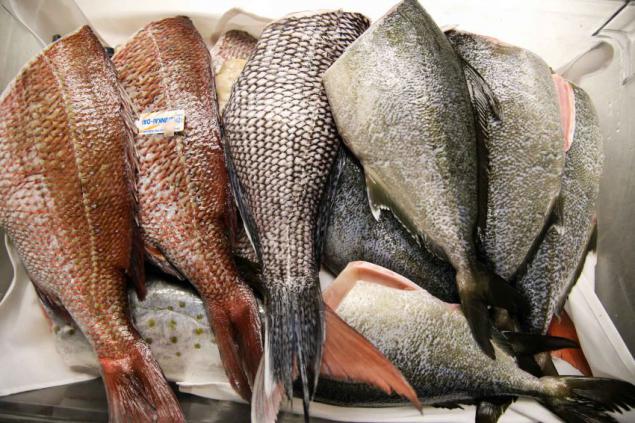
Before the chef will allow to touch seafood, his skills with a kitchen knife must be honed to perfection. The restaurant require the skill of the chef cut a clove of garlic for 16 plates.

Even the most skilled chefs have to do this tedious work like cutting Thai chili.
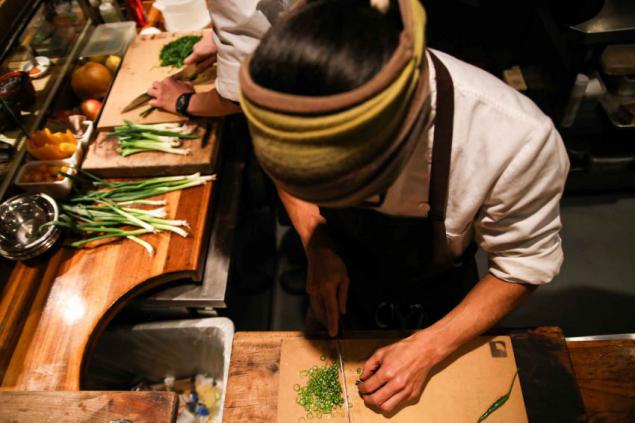
In traditional Japanese sushi rice is considered the main ingredient, and the fish just adds perfection grain. If the rice is cooked is not perfect, hence the taste of the dish will not be perfect.
Rice cook for a couple, and then shift into a large wooden bowl (Hangiri) with vinegar and stir with wooden spatula (Shamoji) so that the vinegar evenly coat each grain of rice to cool and giving the desired adhesive structure.

Once the blood and viscera have been removed, Masa gently removes the skin and cut the fish fillets, leaving thin layers.
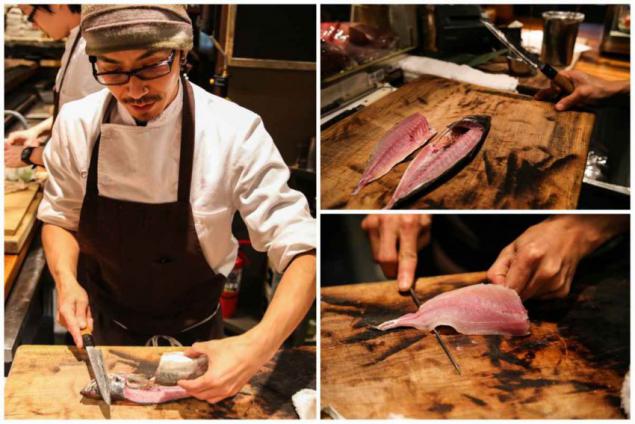
Salmon is actually considered a white fish. His reddish-orange color and unique flavor due to the fact that, apart from small fish, he eats more and crustaceans.

"The way the chef touches the fish to determine its skills and know how tenderly he refers to it," - says Masa.

In the most popular sushi bars and restaurants of Tokyo for a change of service is not so many customers. Restaurants are proud that thanks to sushi counters with his own eyes, guests can watch as a master cook what later would be on their plates.
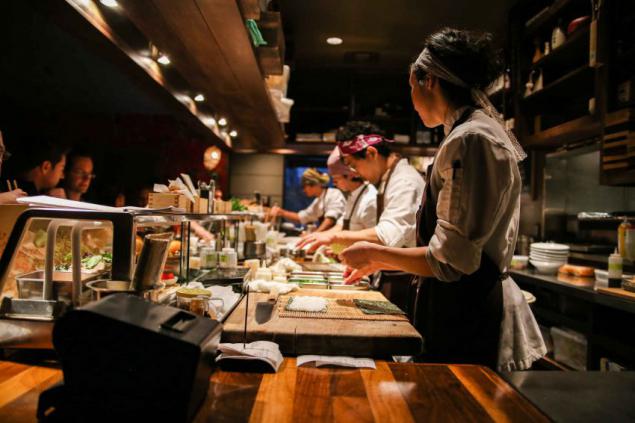
People who work for a sushi counters are the most hospitable and humble people on the planet, but keep in mind that you, as a visitor, must also behave properly.
Most of the Japanese sushi restaurant operates on the principle of "omakase" ("Trust in You"), under which the chef chooses a dish to visitors at its discretion, attaches great importance to the tastes of customers, rather than the chef. No need to ask, "Which is better?". Just tell us about your preferences, and you get what is sure you'll be pleased.
Never ask, fresh sushi or not. In decent schools, working legally, dishes expired or spoiled food simply will not serve.
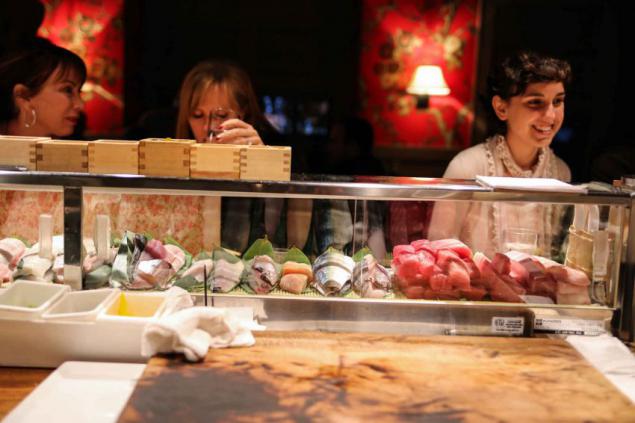
One of the most important duties of a sushi chef is a supply chain management and fish stocks throughout the evening. "Every moment - a sentence, - says Masa. - You do not want to see the extra sour foods, and at the same time you do not want to admit that anything was over at the wrong time, such as bluefin tuna. "
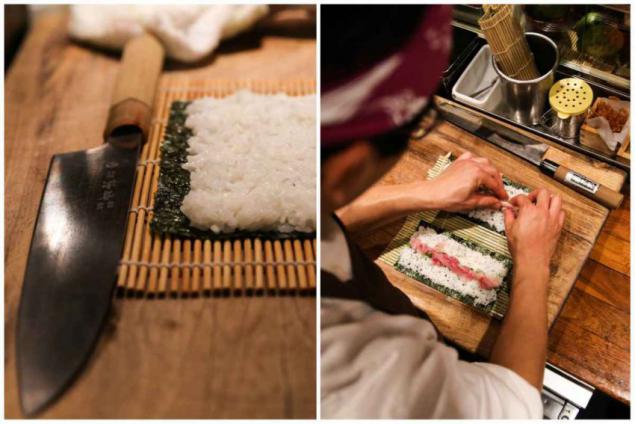
Sushi traditionalists skeptical and with some irony belong to roll, but the preparation of even the most simple at first glance, the food requires a lot of skill and craftsmanship. Good sushi literally crumble and melt in your mouth, while incorrectly folded rolls eat and also taste glutinous rice, no more feel.
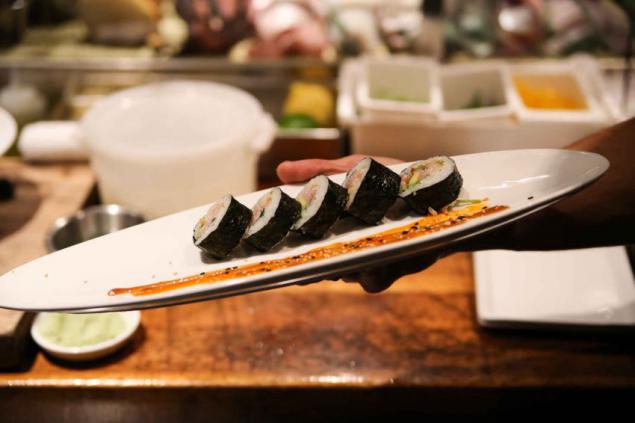
Cook sprinkles sea salt is one of the specialties of the restaurant: maguro sashimi with goat cheese, bigeye tuna, pumpkin oil and Fuji apples. "Maguro - the king of the land," - says Masa.
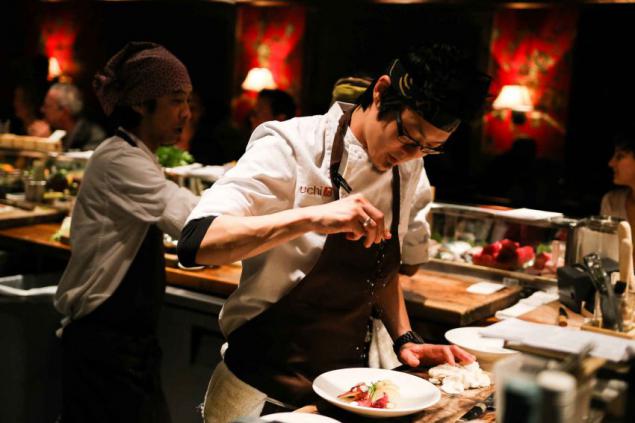
One of the secrets to creating the perfect flavor nigiri, is the contrast between the temperature of the warm rice and cold fish. To feel this contrast, nigiri need to eat immediately after cooking. In the photo - nigiri fish aji (horse mackerel ordinary), decorated with ginger, sesame seeds, green onions and tamari (a type of soy sauce, which has a full-bodied, but less salty taste).
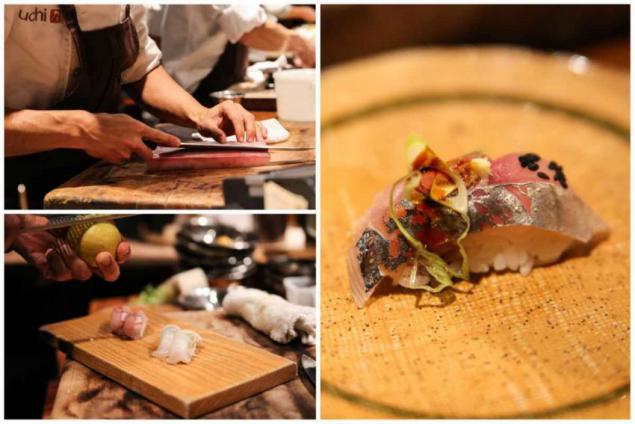
In the kitchen, a sushi restaurant prepares masterpiece creations such as Walu Walu, a hot dish of grilled escolar with candied citrus, lemon and vinegar dressing Japanese ginger.
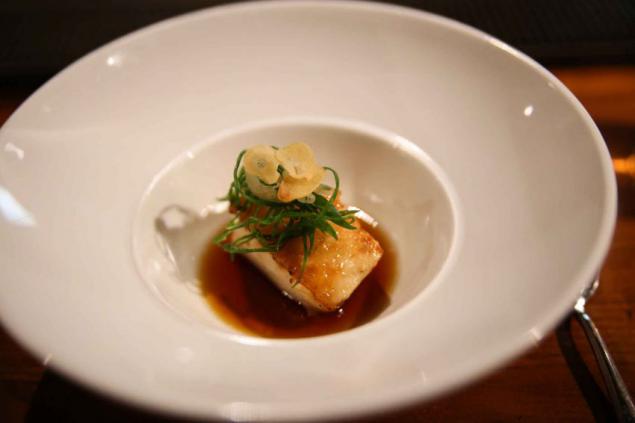
Uni, or sea urchin roe - the most unusual, you can order a land-bar. However, uni - it does not eggs, and genitals. Sea urchin roe brought in from Santa Barbara, where it is collected by diving into the icy water, highly experienced (and well-earning) divers.
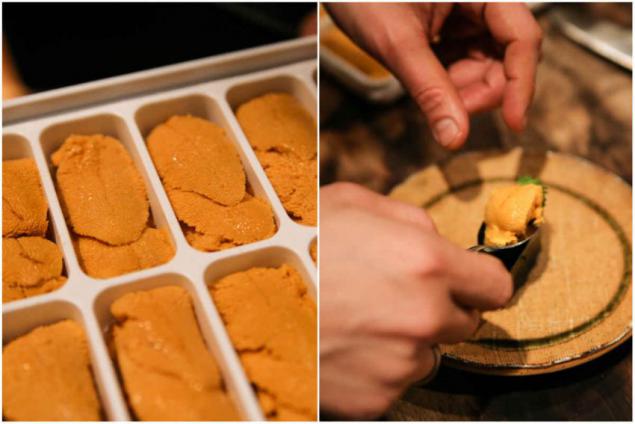
Order uni - a sure way to curry favor with the sushi chef.
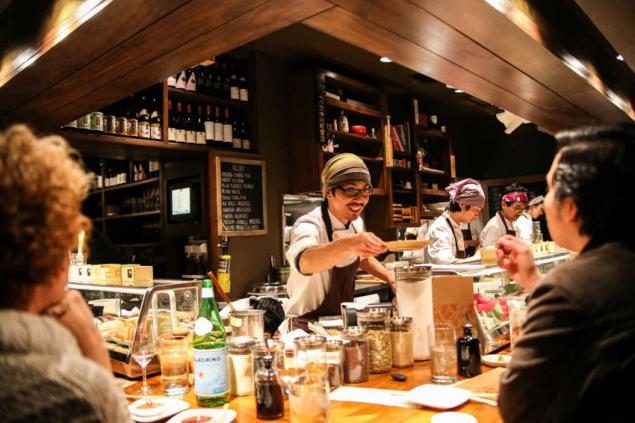
Shift sushi chef ended at 11 pm, when the restaurant was closed. But even after Masa folded into the bag all your knives, he did not leave work until one o'clock precisely. Total time sushi chef takes as much as 14 hours. And when you consider that he works six or seven times a week, at home it almost never happens.
Sushi chef lives work, and the best reward for him - this is thanks satiated and satisfied customers.
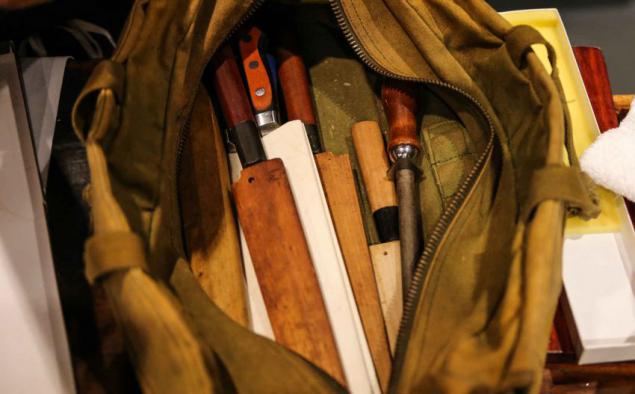
Source:
Read on and you will learn what qualities and skills should have a sushi chef to be head and shoulders above the rest.

Meet this Masa Sayo. He moved to Texas from Japan in 2003 to become part of a team newly restaurant «Uchi». This mackerel, which was taken today from Japan!

The main instruments sushi chef, but his hands, of course, are the knives. Masa carries a serious arsenal, however, generally uses only two or three blades per shift - it depends on the situation and his mood. On each blade are intricate Japanese characters denoting something like the acuteness sharpened knife.

Today, Masa arrived at work at 11 o'clock in the morning in order to have time to do some preparation before the change - at 17.00. Tonight in the expected influx of visitors, so Masa chose an inexpensive lightweight knife that makes it easier to cut products. This small ceramic block is not used for sharpening knives, but rather in order to align the blade and smooth out any irregularities and surface roughness.

Fish in the restaurant brought a few times a week, but sometimes international suppliers and air transport can be unpredictable. Delivery of the goods are detained due to bad weather conditions, employees «Uchiko» had to take him by the airport.

The restaurant has two main supplier of fish. Thanks to the efficiency of air transport, they deliver the freshest fish from all over the world, including a sushi center of the world - famous Tokyo Tsukiji Fish Market.

Butchering fish usually involved three people. The duties include Masa removal of scales. He holds the fish behind the head, because the fins are often very poisonous.

The second guy neatly on a cutting line cuts the fish head.

Gore under the spine is removed with a special tool made of several shpazhek. If blood is not removed, the fish meat spoil quickly.

Removal of internal organs requires special care and accuracy, as accidentally hitting, for example, gallbladder, you run the risk of spoiling fish flesh and get a scolding from the chef. After carrying out a major operation three workers thoroughly wash and rinse water fish.

The whole process of butchering fish held in almost complete silence, workers retain their essential Zen calm and composure.

The team cut up about 13-18 pounds of fish for half an hour, after which it is sent to the sushi counter for profiling.

Before the chef will allow to touch seafood, his skills with a kitchen knife must be honed to perfection. The restaurant require the skill of the chef cut a clove of garlic for 16 plates.

Even the most skilled chefs have to do this tedious work like cutting Thai chili.

In traditional Japanese sushi rice is considered the main ingredient, and the fish just adds perfection grain. If the rice is cooked is not perfect, hence the taste of the dish will not be perfect.
Rice cook for a couple, and then shift into a large wooden bowl (Hangiri) with vinegar and stir with wooden spatula (Shamoji) so that the vinegar evenly coat each grain of rice to cool and giving the desired adhesive structure.

Once the blood and viscera have been removed, Masa gently removes the skin and cut the fish fillets, leaving thin layers.

Salmon is actually considered a white fish. His reddish-orange color and unique flavor due to the fact that, apart from small fish, he eats more and crustaceans.

"The way the chef touches the fish to determine its skills and know how tenderly he refers to it," - says Masa.

In the most popular sushi bars and restaurants of Tokyo for a change of service is not so many customers. Restaurants are proud that thanks to sushi counters with his own eyes, guests can watch as a master cook what later would be on their plates.

People who work for a sushi counters are the most hospitable and humble people on the planet, but keep in mind that you, as a visitor, must also behave properly.
Most of the Japanese sushi restaurant operates on the principle of "omakase" ("Trust in You"), under which the chef chooses a dish to visitors at its discretion, attaches great importance to the tastes of customers, rather than the chef. No need to ask, "Which is better?". Just tell us about your preferences, and you get what is sure you'll be pleased.
Never ask, fresh sushi or not. In decent schools, working legally, dishes expired or spoiled food simply will not serve.

One of the most important duties of a sushi chef is a supply chain management and fish stocks throughout the evening. "Every moment - a sentence, - says Masa. - You do not want to see the extra sour foods, and at the same time you do not want to admit that anything was over at the wrong time, such as bluefin tuna. "

Sushi traditionalists skeptical and with some irony belong to roll, but the preparation of even the most simple at first glance, the food requires a lot of skill and craftsmanship. Good sushi literally crumble and melt in your mouth, while incorrectly folded rolls eat and also taste glutinous rice, no more feel.

Cook sprinkles sea salt is one of the specialties of the restaurant: maguro sashimi with goat cheese, bigeye tuna, pumpkin oil and Fuji apples. "Maguro - the king of the land," - says Masa.

One of the secrets to creating the perfect flavor nigiri, is the contrast between the temperature of the warm rice and cold fish. To feel this contrast, nigiri need to eat immediately after cooking. In the photo - nigiri fish aji (horse mackerel ordinary), decorated with ginger, sesame seeds, green onions and tamari (a type of soy sauce, which has a full-bodied, but less salty taste).

In the kitchen, a sushi restaurant prepares masterpiece creations such as Walu Walu, a hot dish of grilled escolar with candied citrus, lemon and vinegar dressing Japanese ginger.

Uni, or sea urchin roe - the most unusual, you can order a land-bar. However, uni - it does not eggs, and genitals. Sea urchin roe brought in from Santa Barbara, where it is collected by diving into the icy water, highly experienced (and well-earning) divers.

Order uni - a sure way to curry favor with the sushi chef.

Shift sushi chef ended at 11 pm, when the restaurant was closed. But even after Masa folded into the bag all your knives, he did not leave work until one o'clock precisely. Total time sushi chef takes as much as 14 hours. And when you consider that he works six or seven times a week, at home it almost never happens.
Sushi chef lives work, and the best reward for him - this is thanks satiated and satisfied customers.

Source:
7-year-old boy has collected more than 600 000 dollars for a sick friend
Olympic champion decided to sell Mercedes
